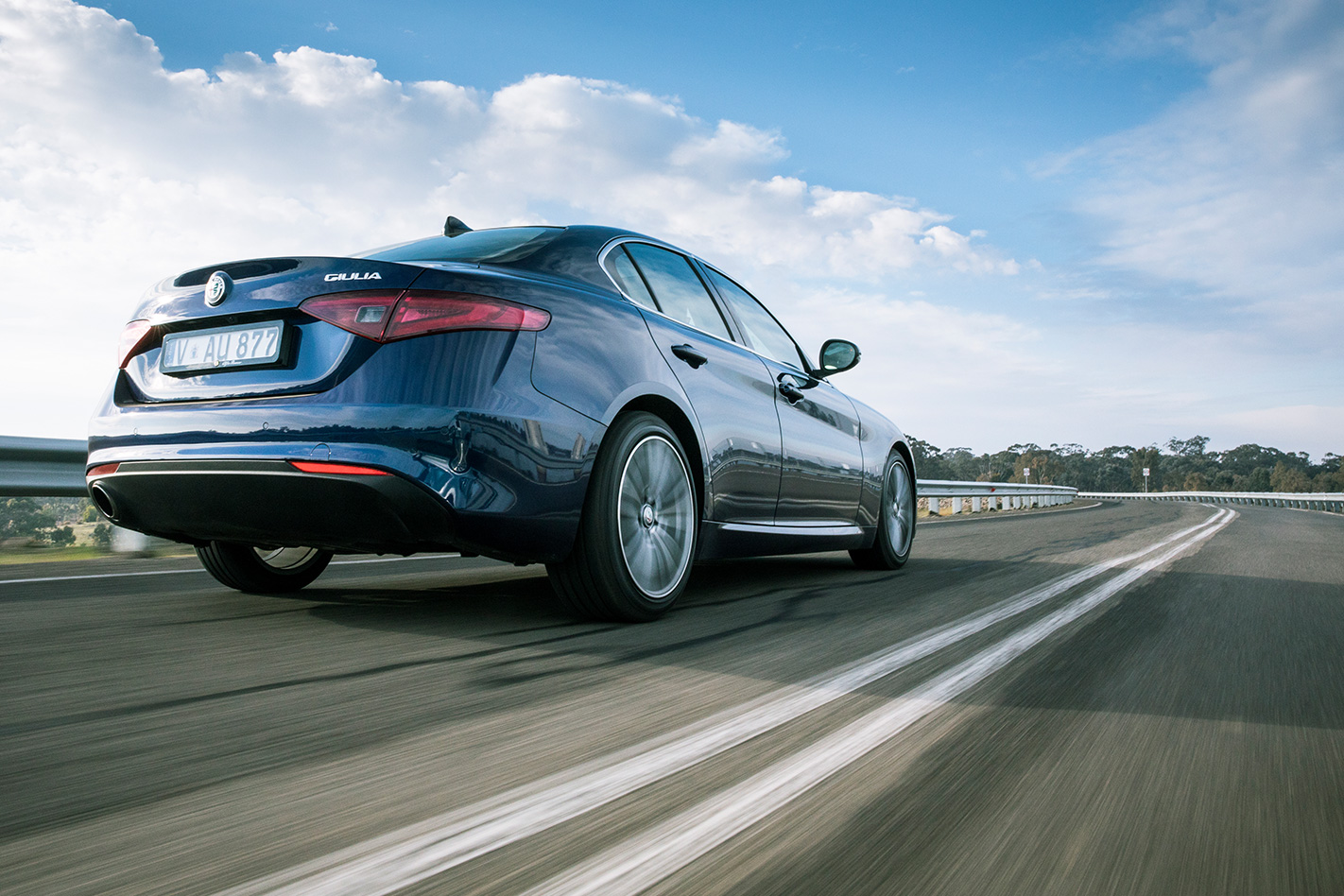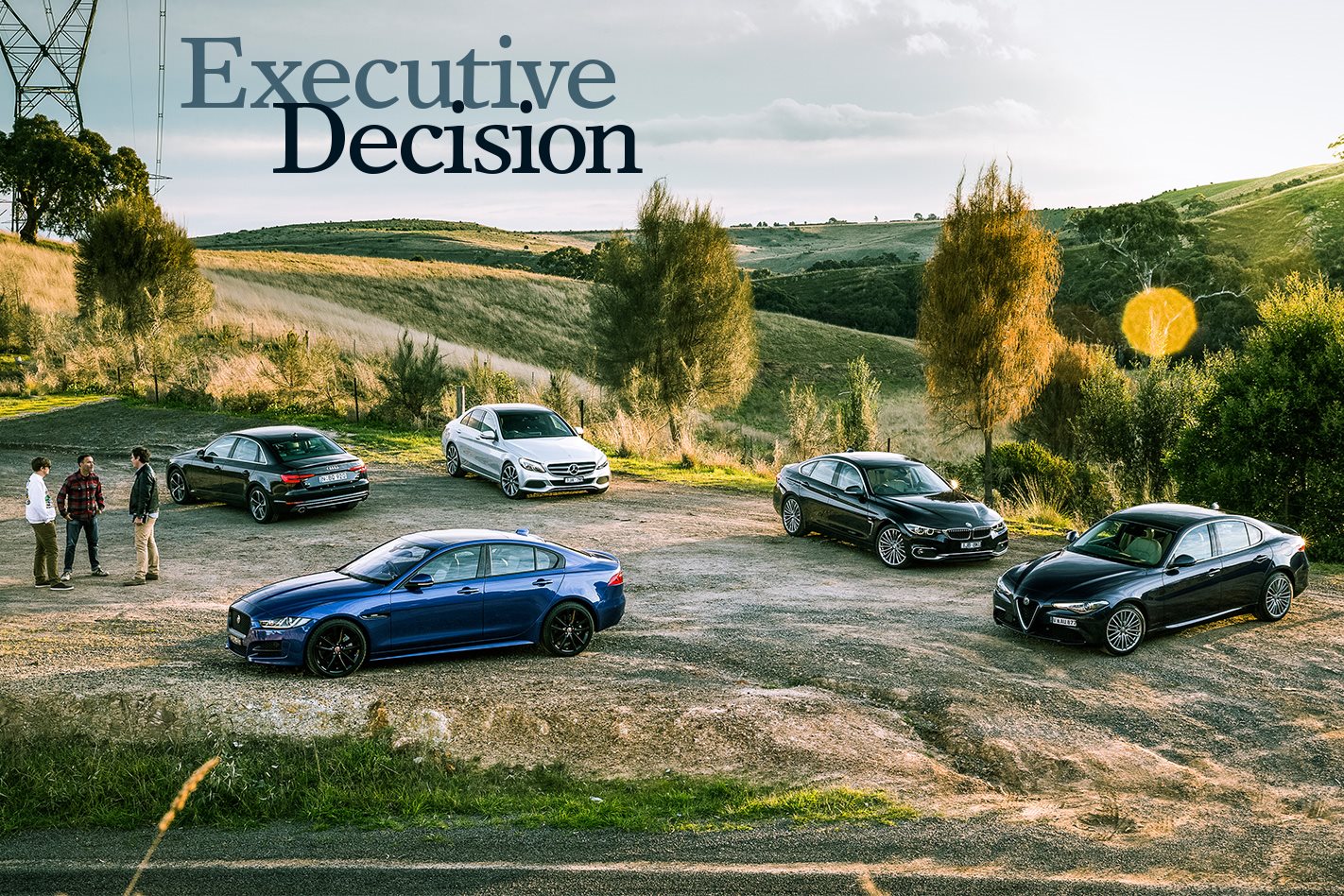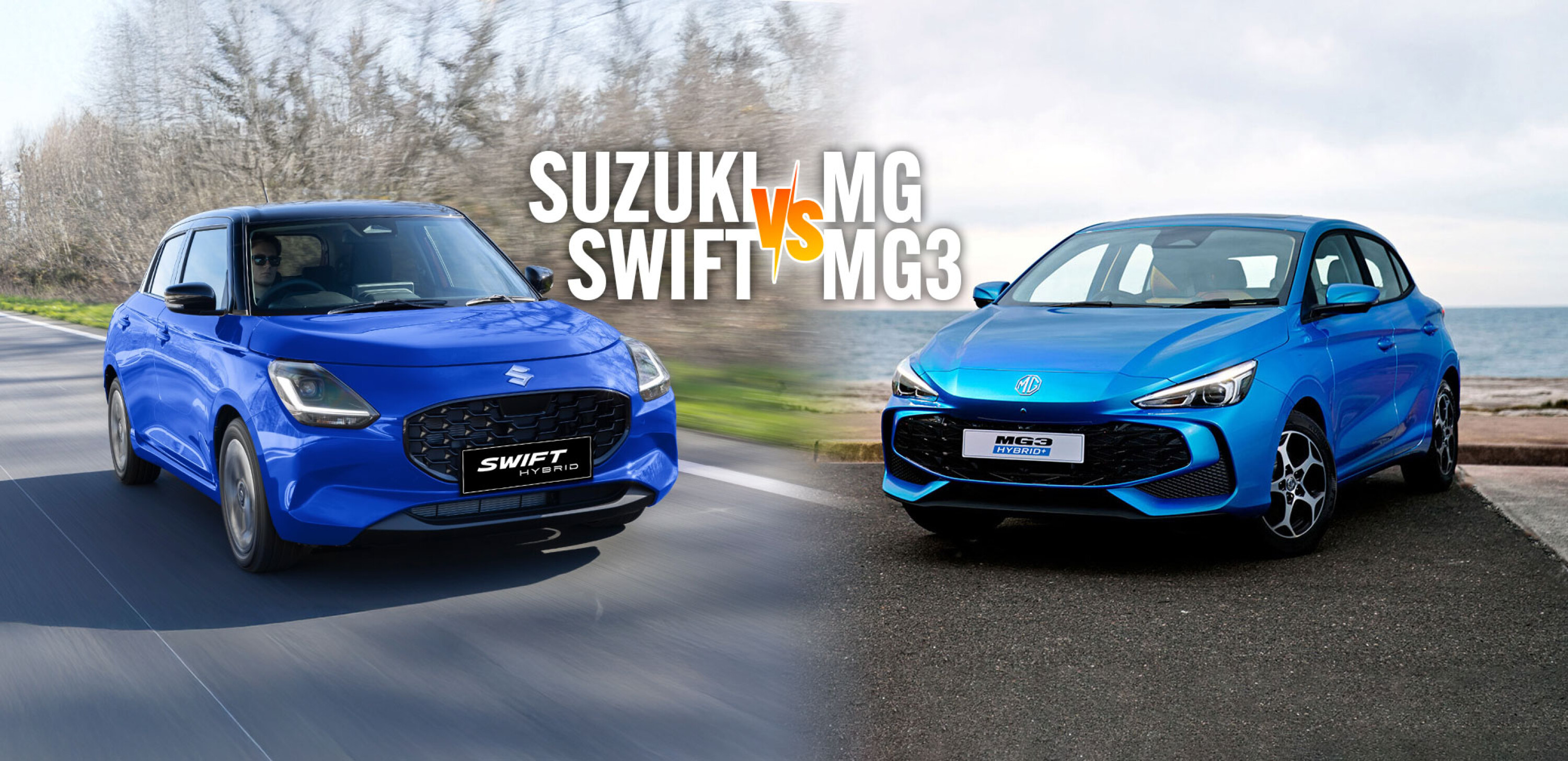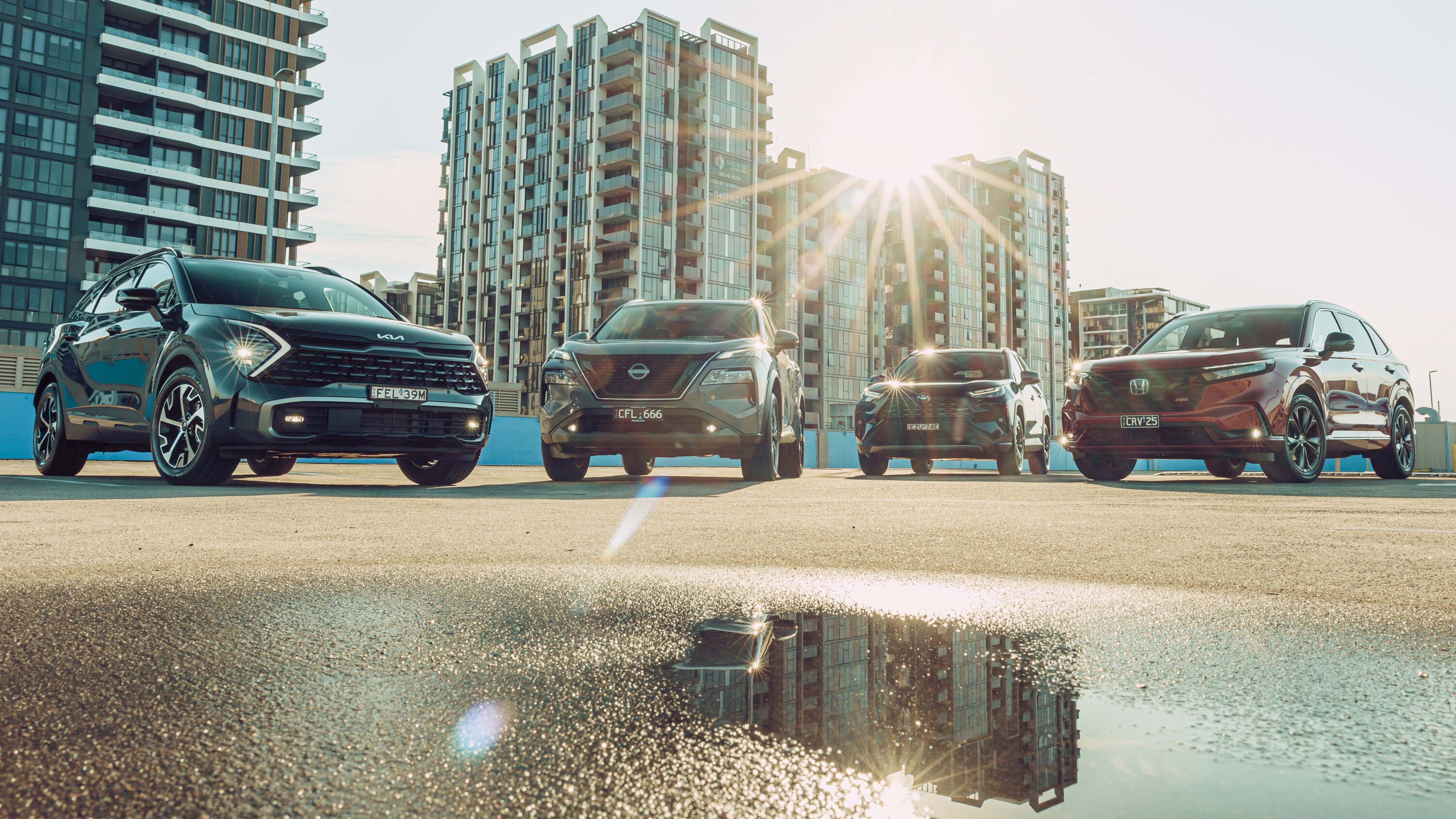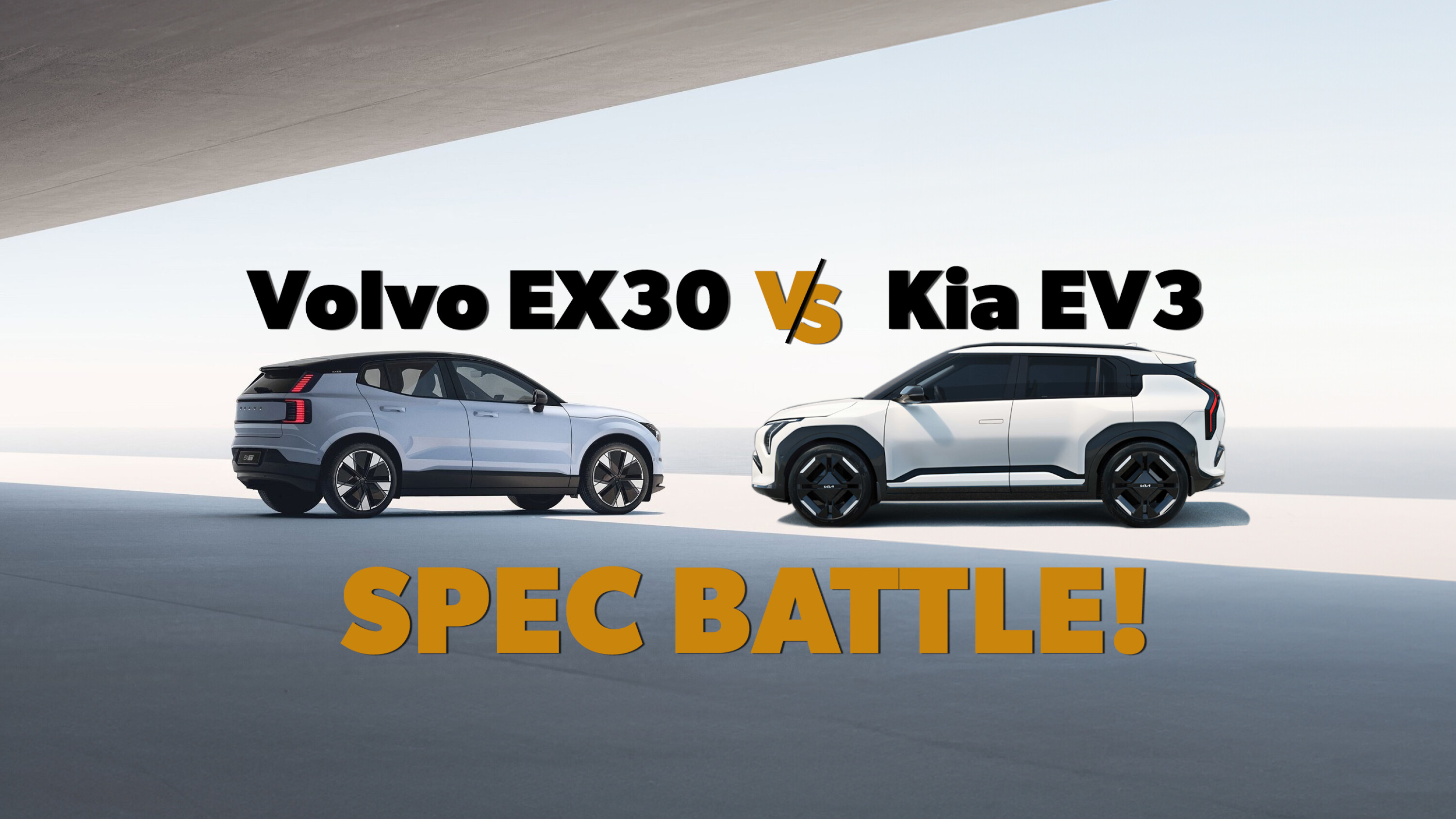ON OCCASION, it’s better to forget what you thought you knew; to chuck out all those old tropes, heuristics, and pub knowledge you’ve accumulated about the cars we’ve assembled here.
They’ll do you no good. The game of one-upmanship in the medium executive class has moved at such breathtaking pace that perhaps it’s time to reset the datum and look over the best of 2017’s crop with a fresh set of eyes.
The Alfa Romeo Giulia was the catalyst for this comparison. We adored the 375kW Quadrifoglio rocketship, but wondered whether shearing more than 200kW from that figure would leave the Super version feeling a bit overmatched and underbaked in this company.
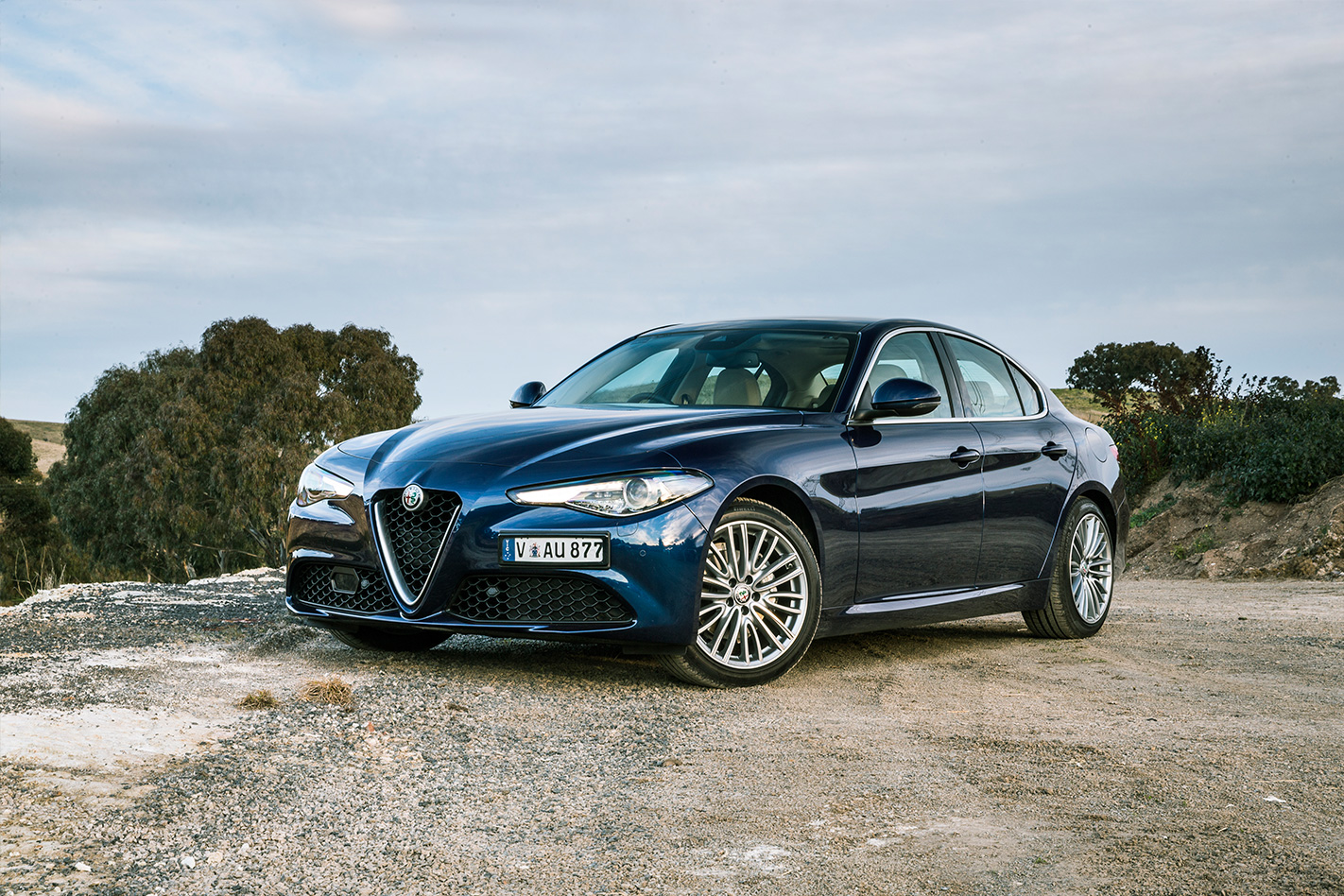
You’re probably car-mag literate enough to know that these tests usually go one of two ways. The conventional route is to discuss the merits of each vehicle in turn and then award the verdict to something German. Safest that way.
The alternate option is to cultivate a tasty bit of controversy by naming a left-fielder as the winner, and be forced to doggedly repeat and justify that decision for years to come. What we’re seeing here is something a bit different. As this genre matures, the templates for packaging, ride, handling, and other attributes become better known and easier to replicate. The net effect of this is that what was last year’s class leader can rapidly become this year’s wooden spoon holder. Picking a favourite a priori isn’t easy and that’s a new thing.
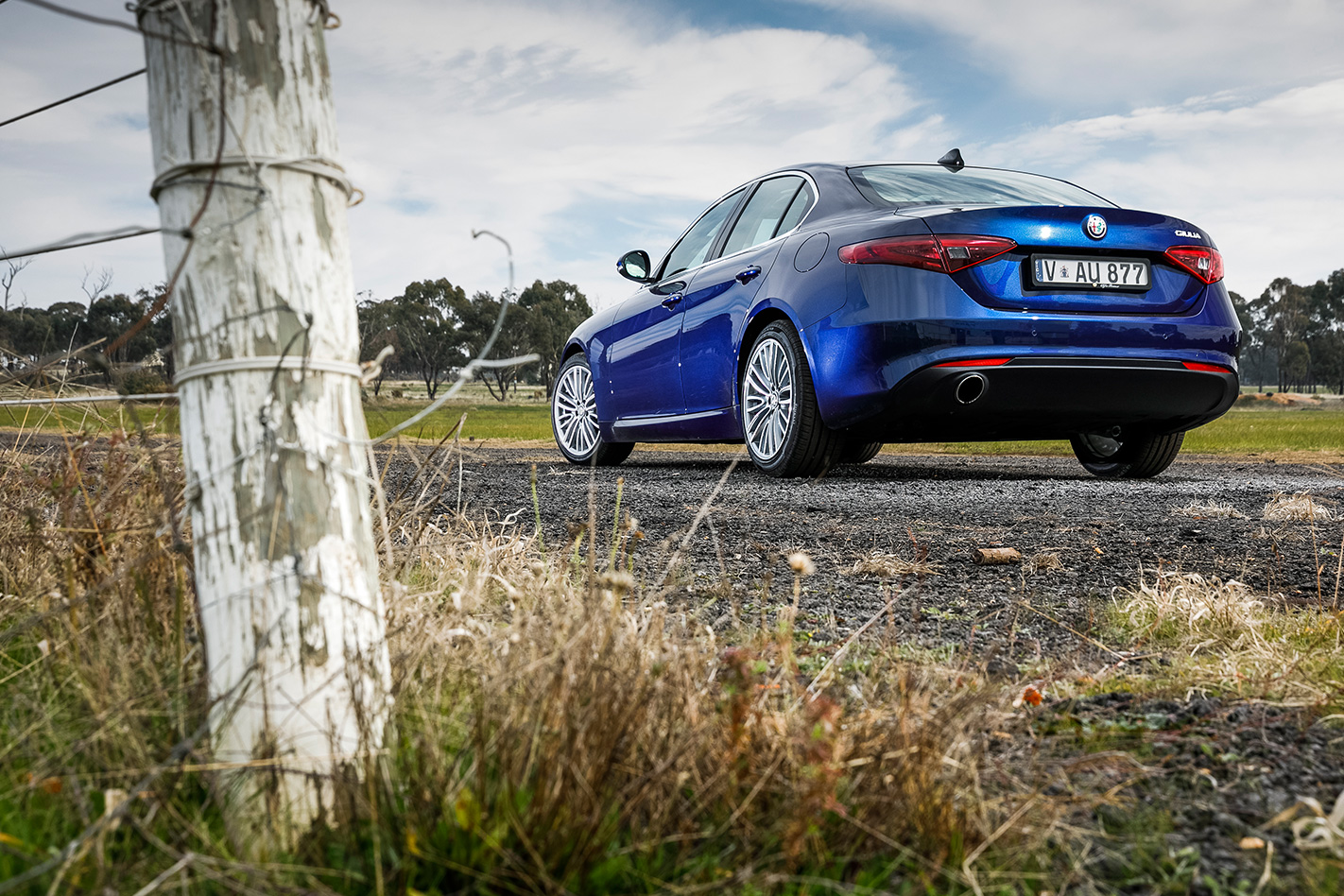
Its ZF eight-speed transmission can be marshalled by a pair of vast column-mounted paddles, but with the ‘DNA’ drive controller set to dynamic, the software is smart enough to make these largely redundant. The engine isn’t the most vocal or charismatic unit, but 330Nm at 1750rpm ensures that you don’t need to work it too hard, and that delicious lack of inertia to the way Giulia changes direction means this is the only one of the bunch that eggs you on to look for the twistiest route home. The lack of a limited slip diff would be an issue with more power at its elbow, but even if you do step up to the more powerful Veloce, you’re then buying a diff with non-switchable ESC, which largely defeats the point, from an entertainment perspective at least.
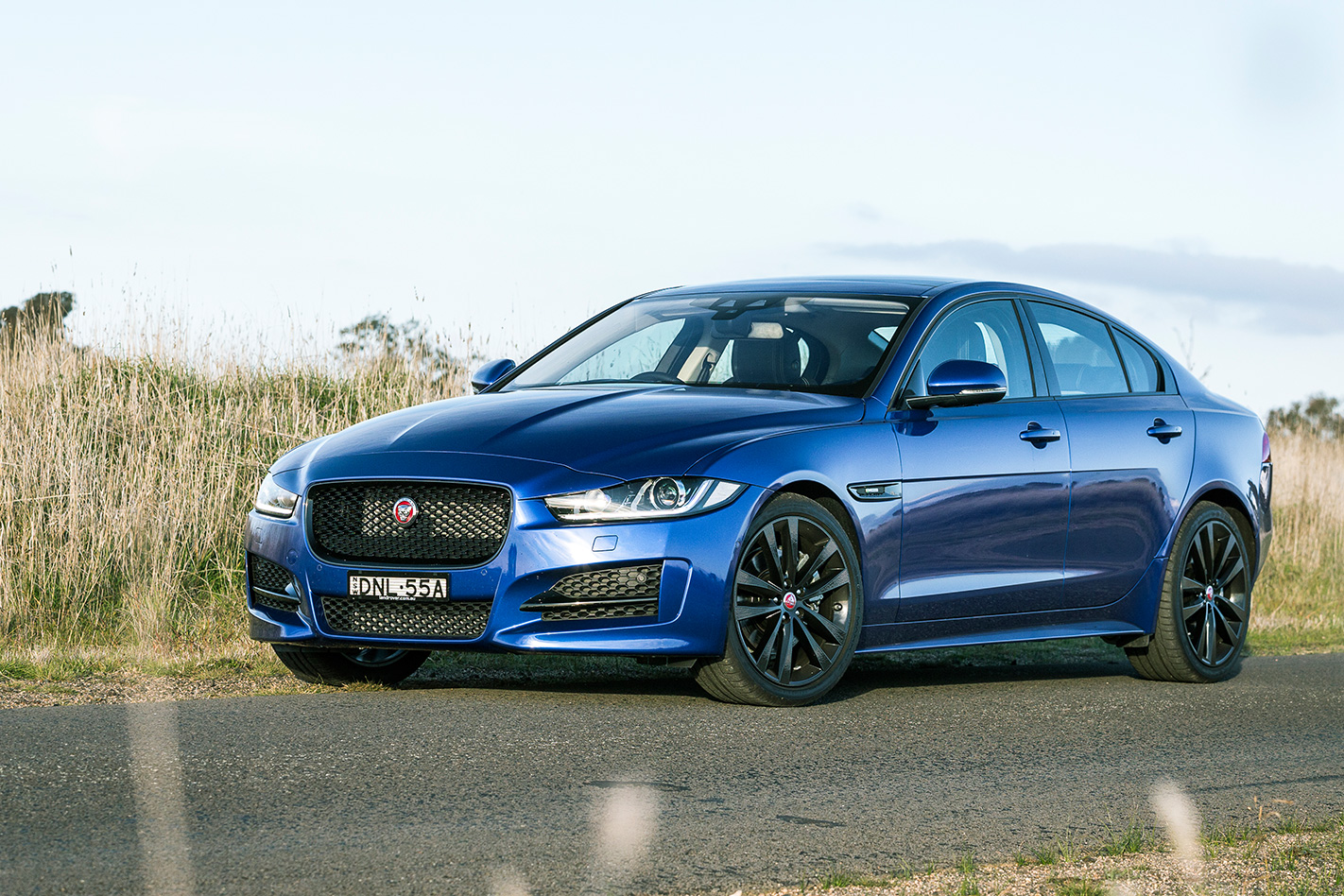
On adaptive dampers, the ride quality varies from best of the bunch in Normal, to easily the worst when set to the borderline unuseable Sport mode. As a result of this huge variation, you tend to leave the Jaguar in Normal and put up with the slightly lugubrious body control. The steering’s excellent, there is stacks of grip and clever ESC calibration, but there’s a whole welter of ergonomic glitches that ought to have been ironed out of the XE’s interior by now. Changing drive modes is an inelegant grope for tiny buttons, and the motorised gear selector, which rises from the centre console remains an answer to a question that nobody was really asking.
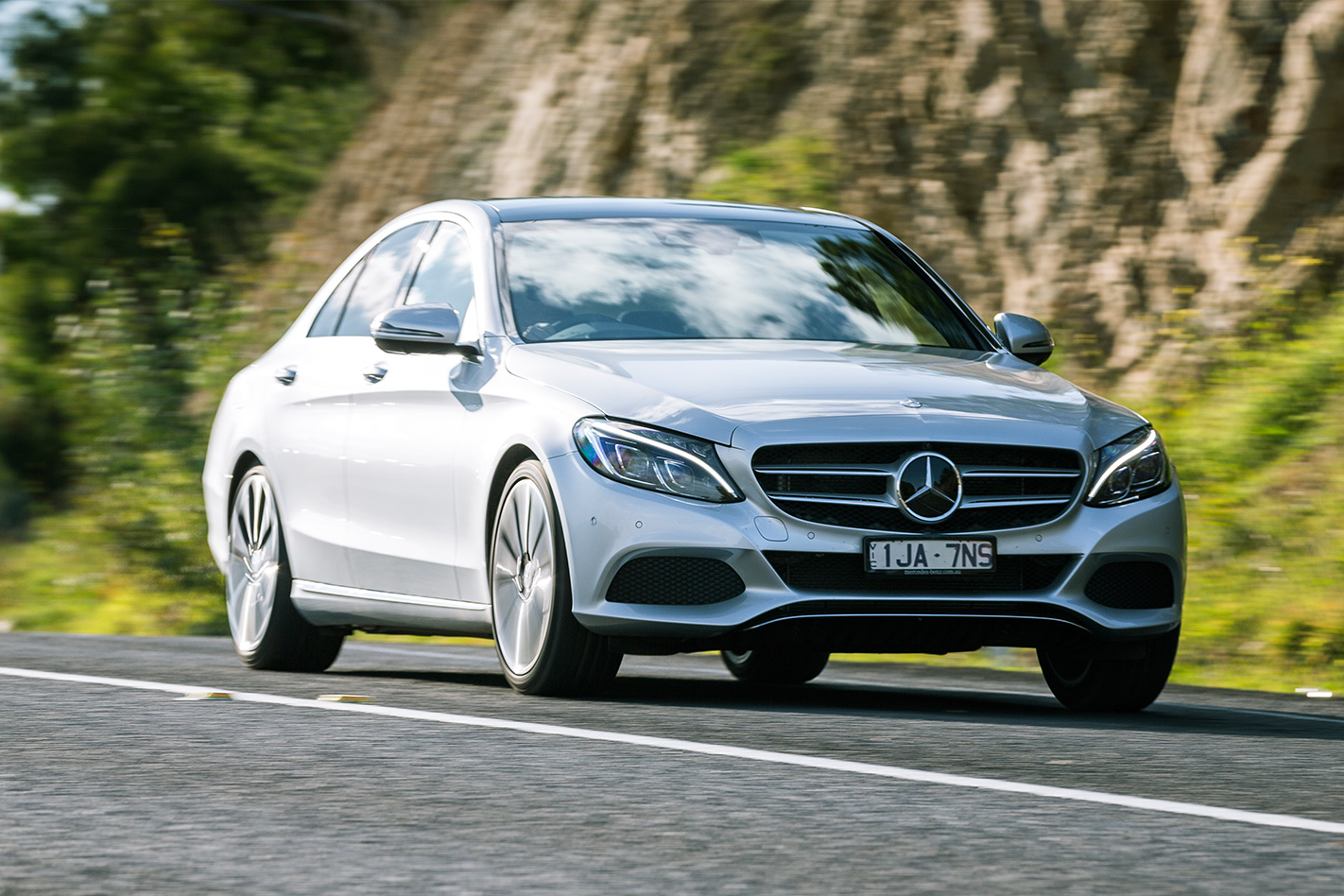
On poorly surfaced roads it feels slightly neurotic, never really settling but without ever getting floaty. It tips into a corner sharply, though, and clings on gamely in the twistier sections without delivering much in the way of nuanced feedback. There’s also markedly more wind noise around the mirrors than in any other car here. What the engine lacks in charm, it makes up for in effectiveness, with the 155kW unit ceding nothing to its rivals in the lunge to the redline.
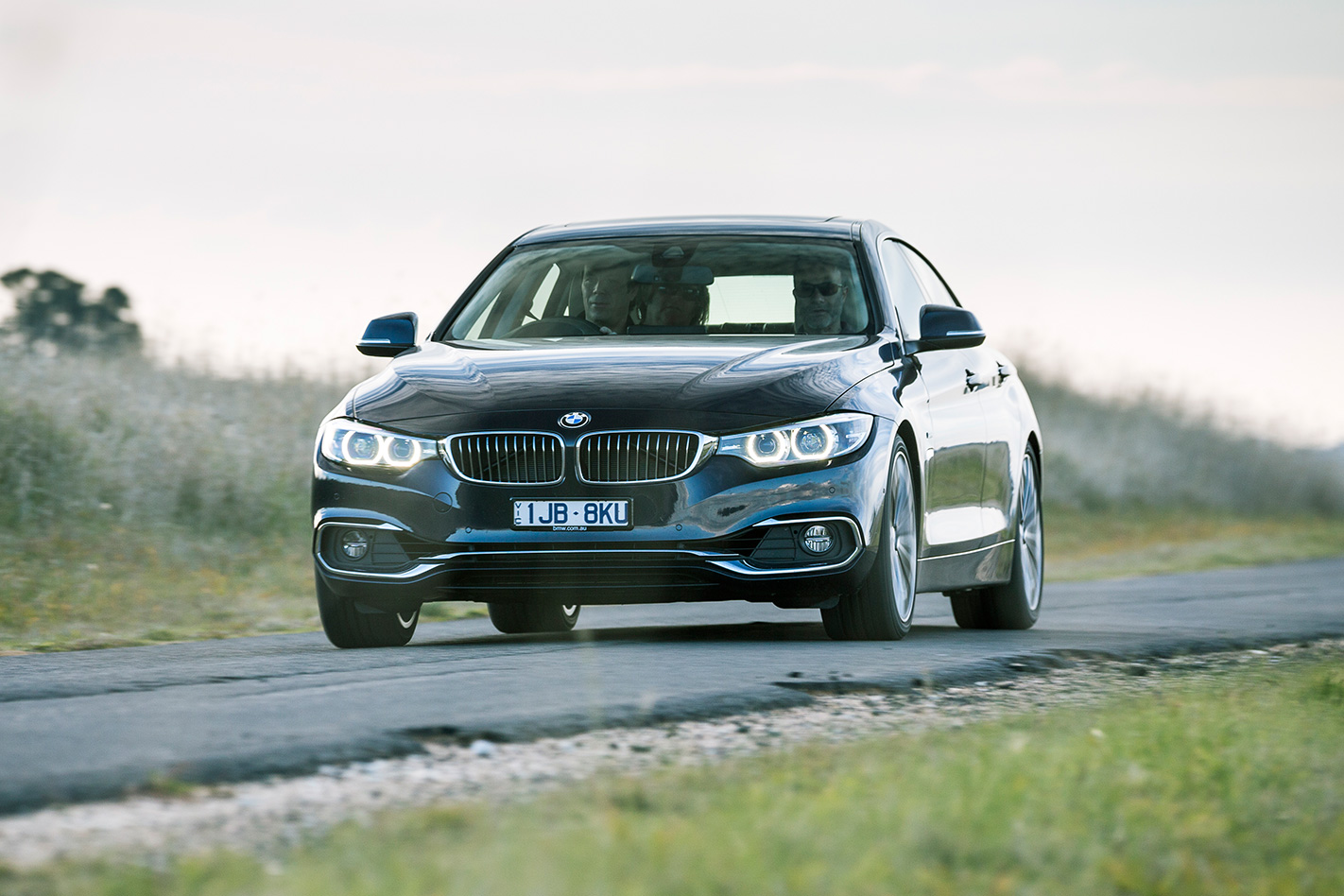
In a field of rear-drive rivals, the front-drive Audi A4 2.0 TFSI always runs the risk of feeling a bit inauthentic, a gussied-up hatch chassis pretending to be part of an exclusive club. On the road it feels nothing of the sort. Refinement is excellent, front-end grip mighty, turn-in crisp, body control taut, and only on rougher roads does the Audi begin to feel a bit raggedy, despite the fitment of $1700 worth of comfort adaptive suspension. Like the BMW, it feels fairly frothy despite fronting up with a mere 140kW, pipping the Munich liftback, but nothing else on the Heathcote strip.
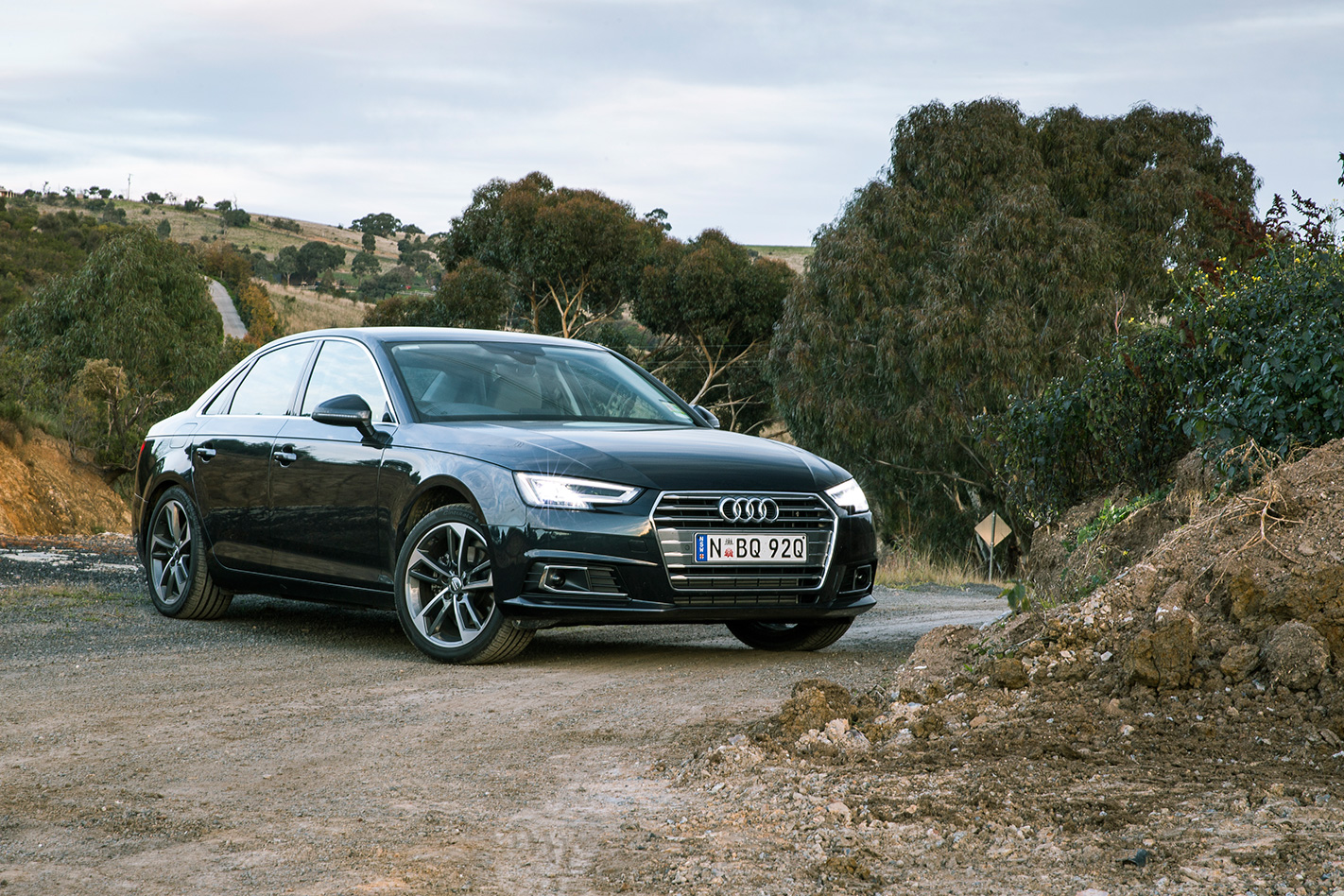
The A4 also won admirers with its design and packaging savvy. Its rear is the only one of this quintet where a six-footer would be comfortable spending any extended period. Headroom up front is the best too, though it being the only car here without a sunroof certainly helped in that regard. While the dash finish and layout is beautifully executed, the long reach to the Drive Select switches and volume control is evidence of a complacent right-hand drive conversion. The interior trim choices of this particular car aren’t Ingolstadt’s finest hour.
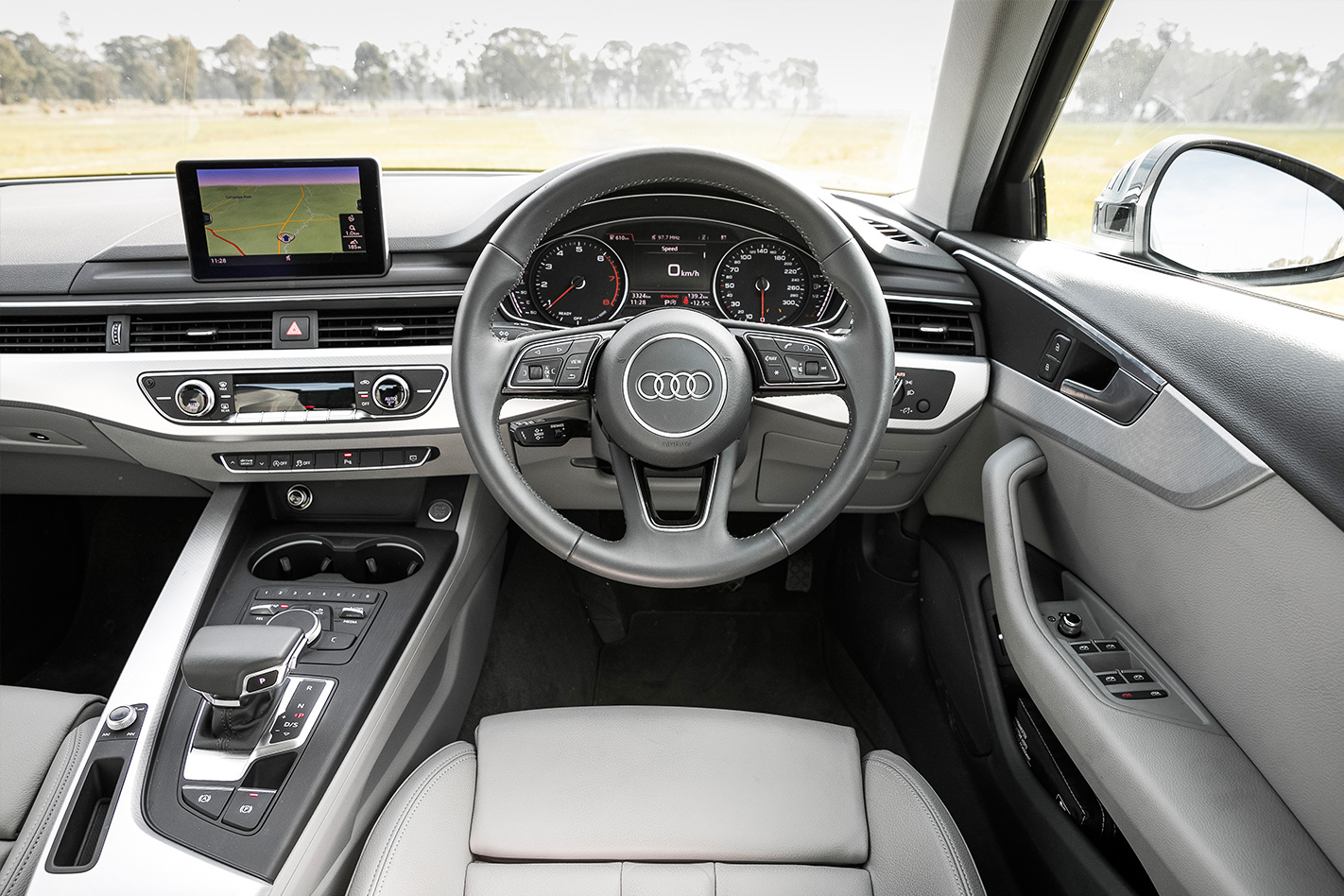
That’s one accusation you’d never level at the Jaguar XE 25t R-Sport – presented here laden down with options that lifted its $68,900 list to an eye-watering $87,590. It’s hard to argue that the combination of 19-inch black Venom alloys, Caesium Blue metallic paint, and gloss black detailing pack doesn’t create a compelling visual argument. Lantern-jawed good looks aside, the XE was found wanting inside.
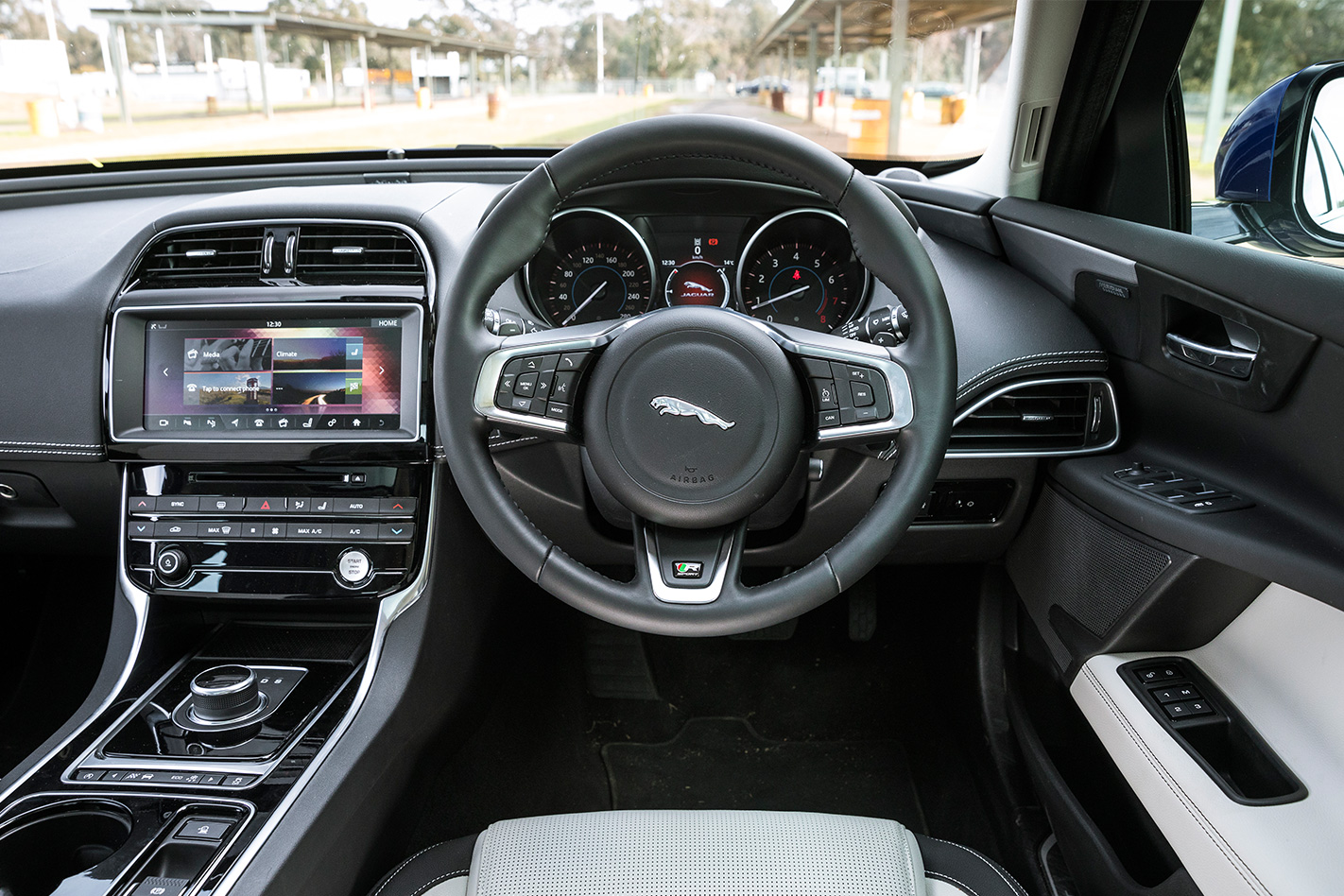
The Giulia’s cabin is a game of two halves, good up front, not so special in the back. The pale wood finish on this car worked better than expected, however some features, like the overly loud indicators, the lack of any interior bottle storage, and the bizarre piano black overhead panel that looks like Darth Vader’s helmet didn’t endear the Giulia to testers.
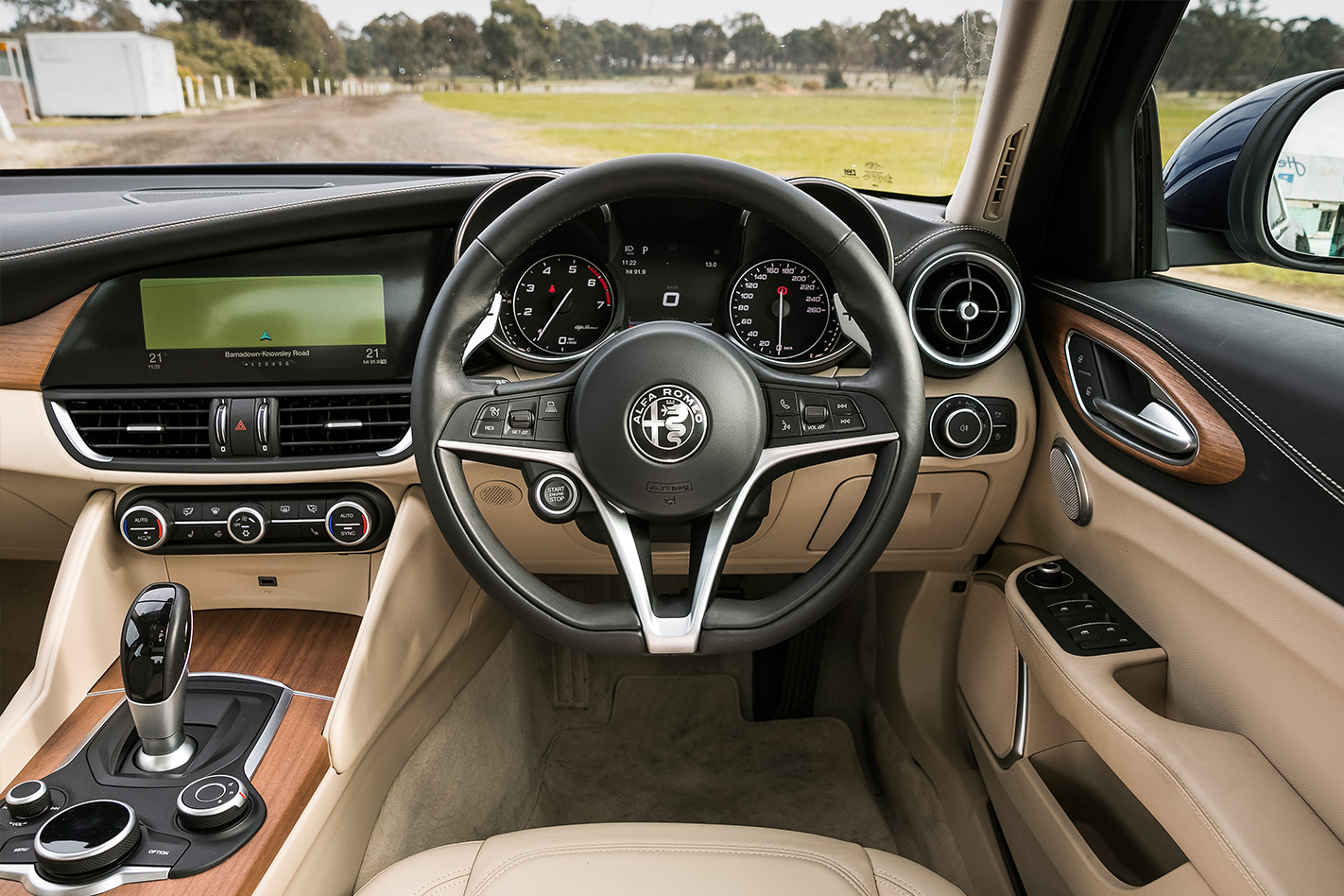
As the only liftback of the lot, the BMW offers something a little different. It arguably looks better than the 3 Series sedan too, with its power-packed bottle rocket flanks and sleek glasshouse. Whether you see that as worth its $7500 premium is clearly debatable, but the recent Life Cycle Impulse (Munich’s mangled argot for ‘facelift’), has seen the price shaved by $2200 and a stack more kit included as standard.
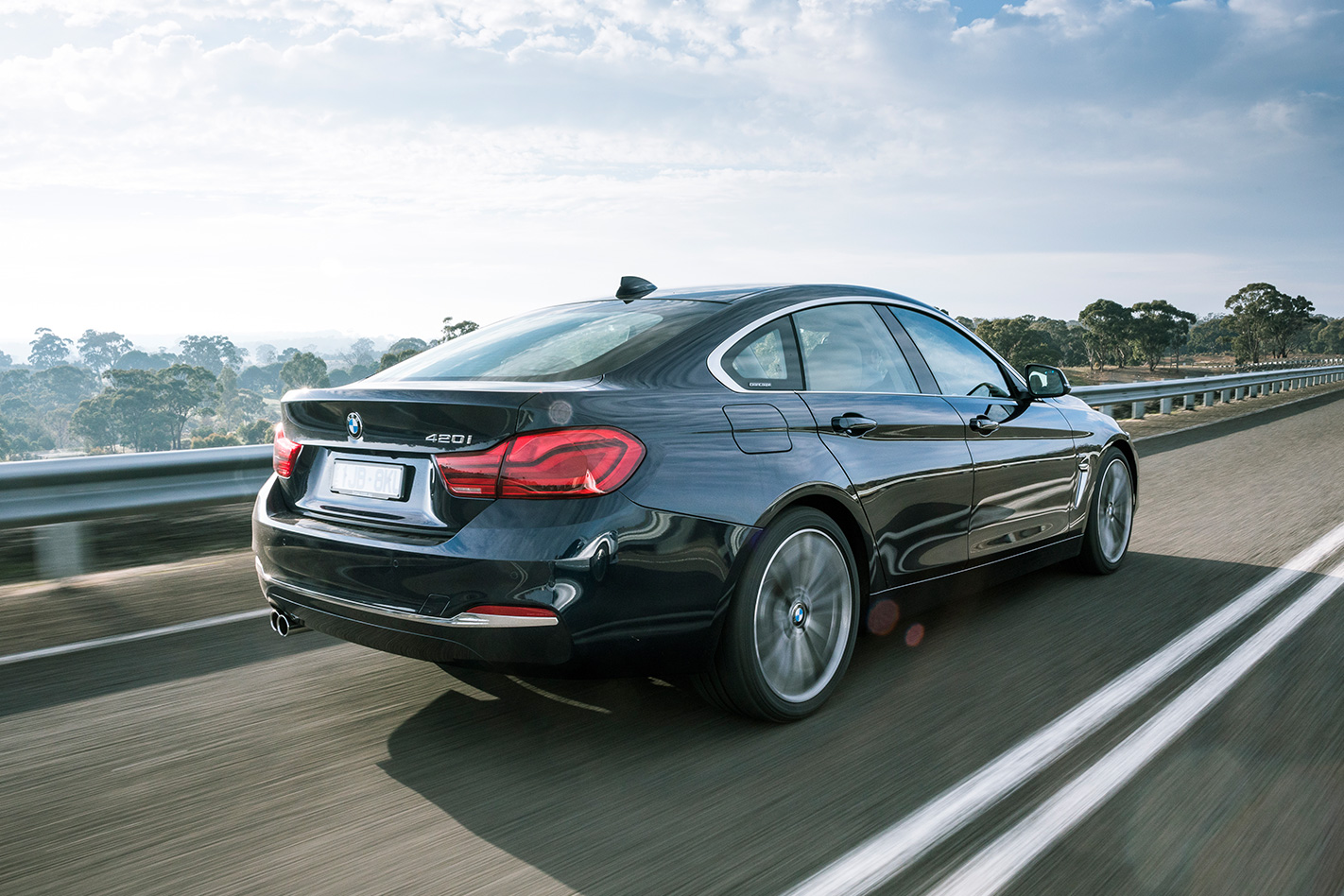
Where things get a bit sticky for the BMW is when you want to step up to the rather lovely 430i version, and net yourself 185kW rather than 135. It’s much the same engine, effectively making the 420i a crippleware version of the 430i, and yet the step up will cost you a swingeing $10,000. For $9000, Audi will elevate you from the 140kW 2.0 TFSI to the 185kW version and include the quattro all-wheel drivetrain, with comparatively better residuals to boot.
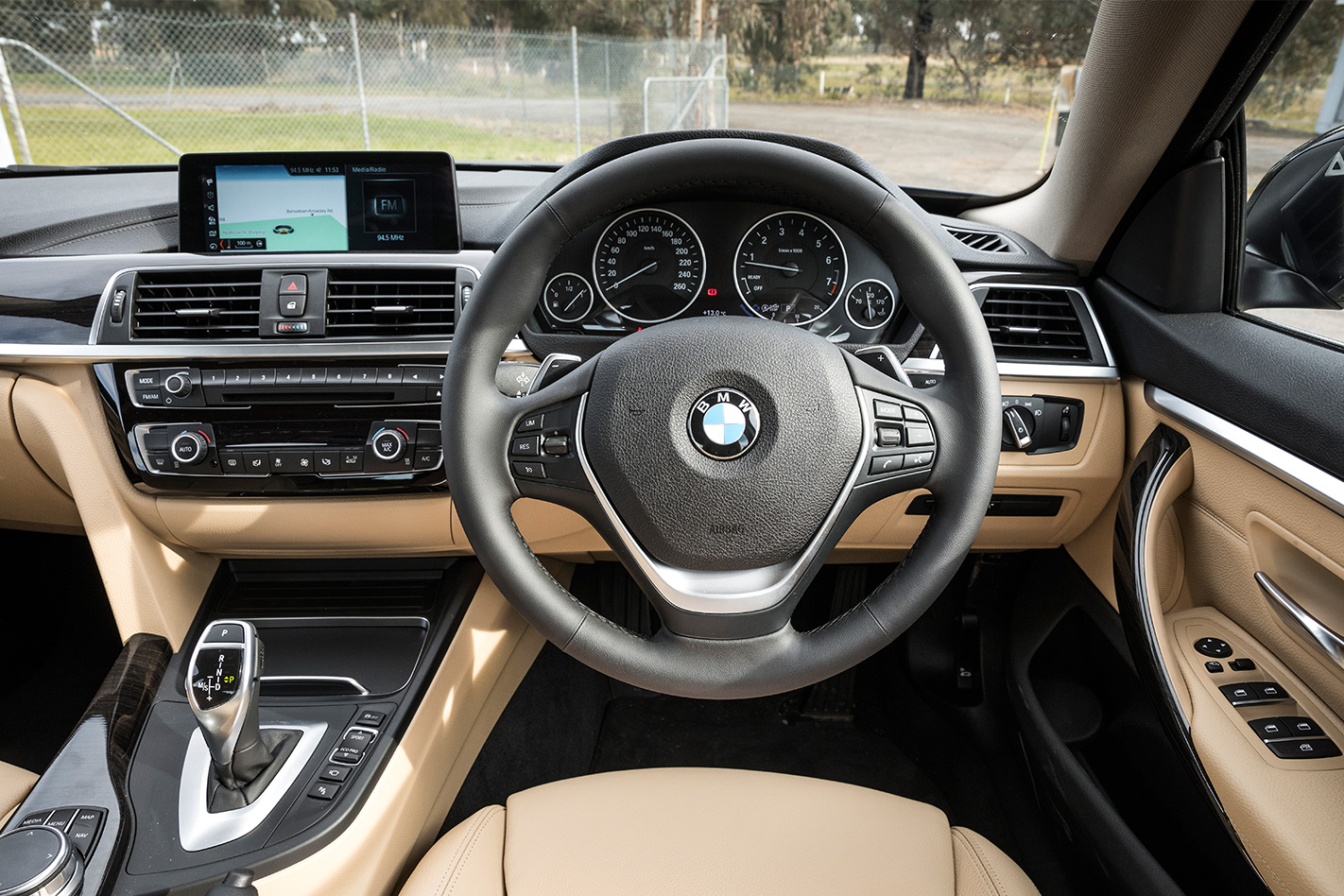
Yet, despite the conservative exterior treatment, the interior is the brashest of the bunch. It’s strangely mismatched in this regard, with swathes of distractingly reflective piano black on the fascia and look-at-me flourishes of contrasting silver and chrome. Yes, it’s undoubtedly expensive looking, but it feels a bit new money in overall execution.
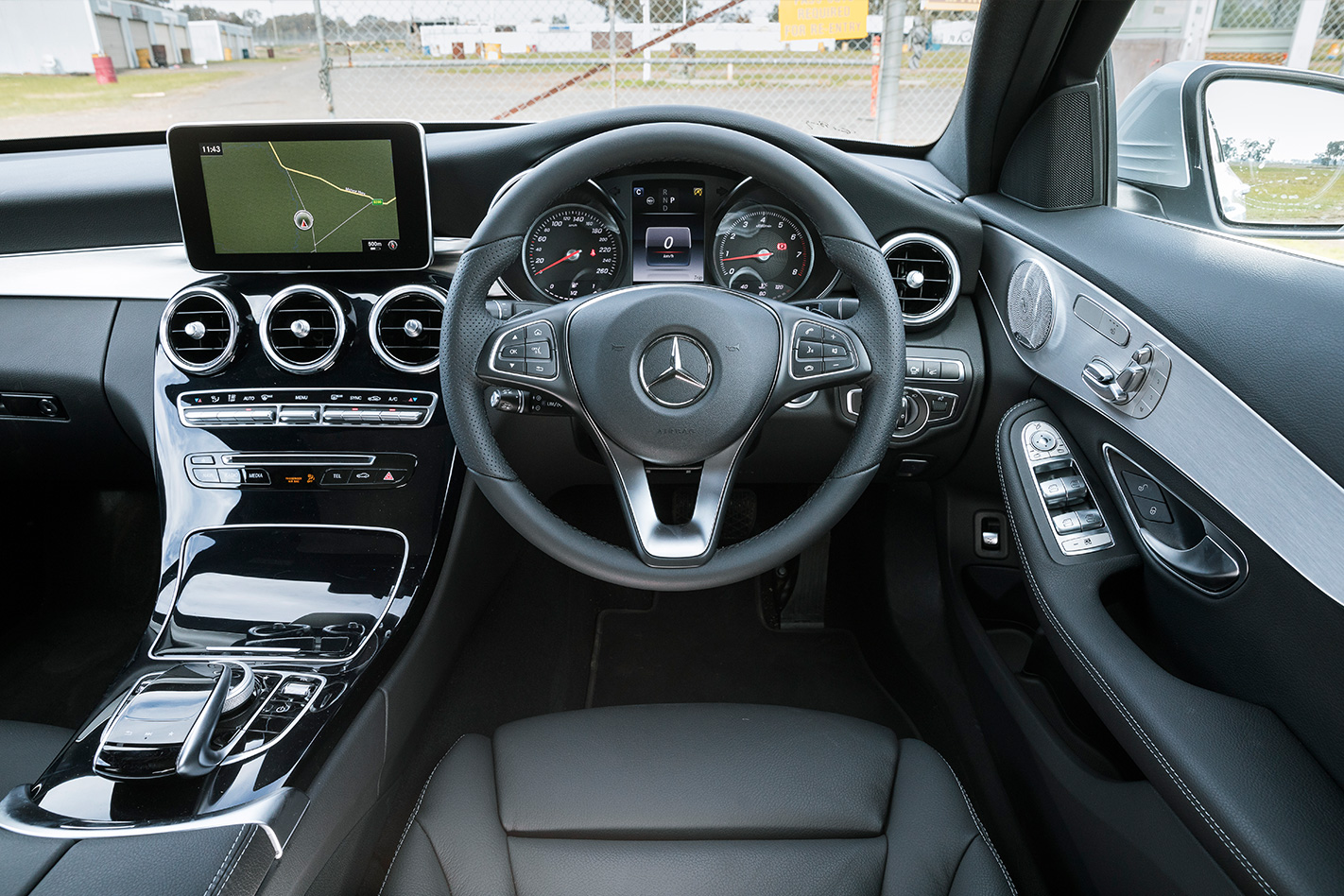
Sifting these cars into any semblance of order based on merit is far from a straightforward task.
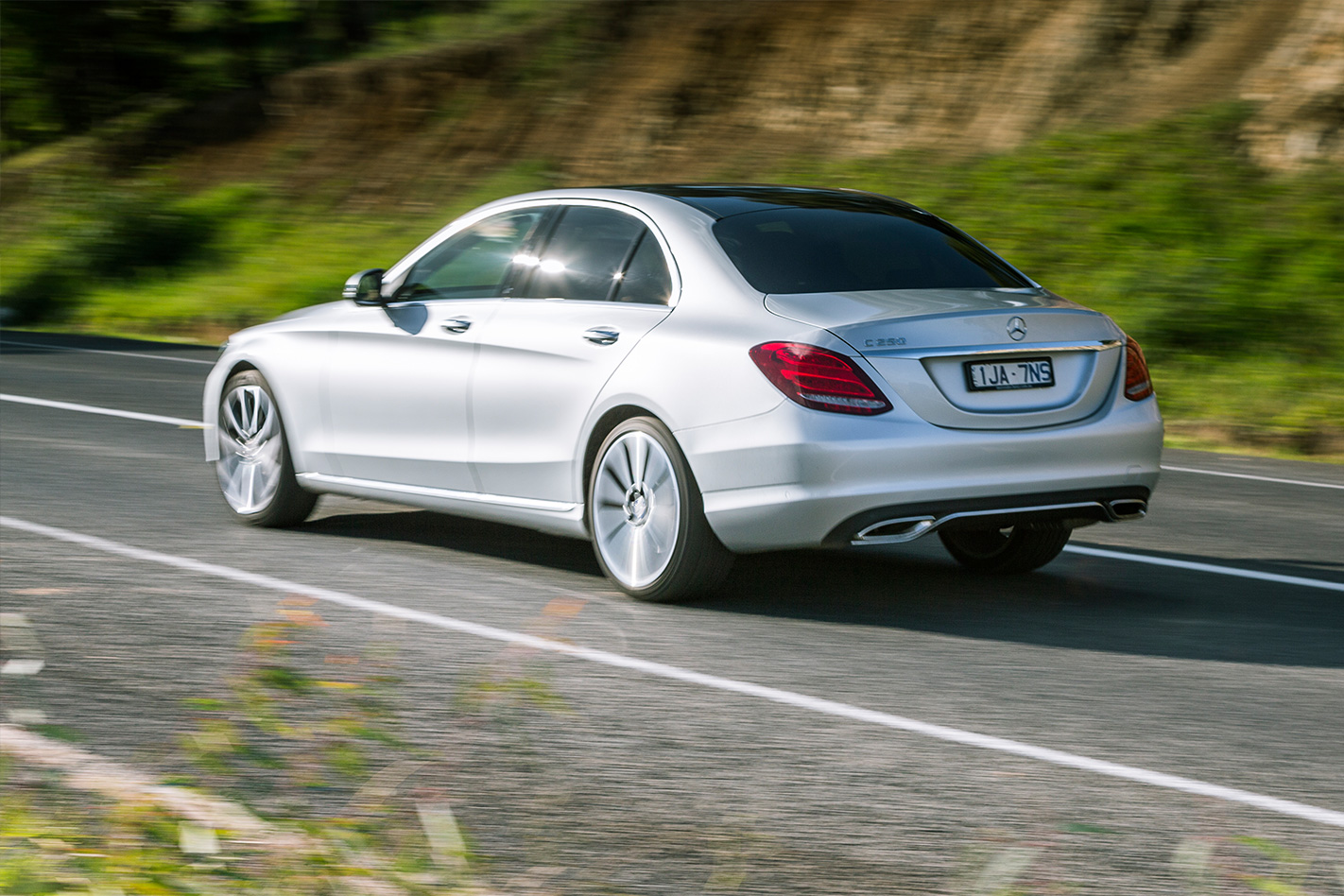
This engine has now been replaced with the 180kW C300 9G-Tronic, which could well have punched the Benz back into contention.
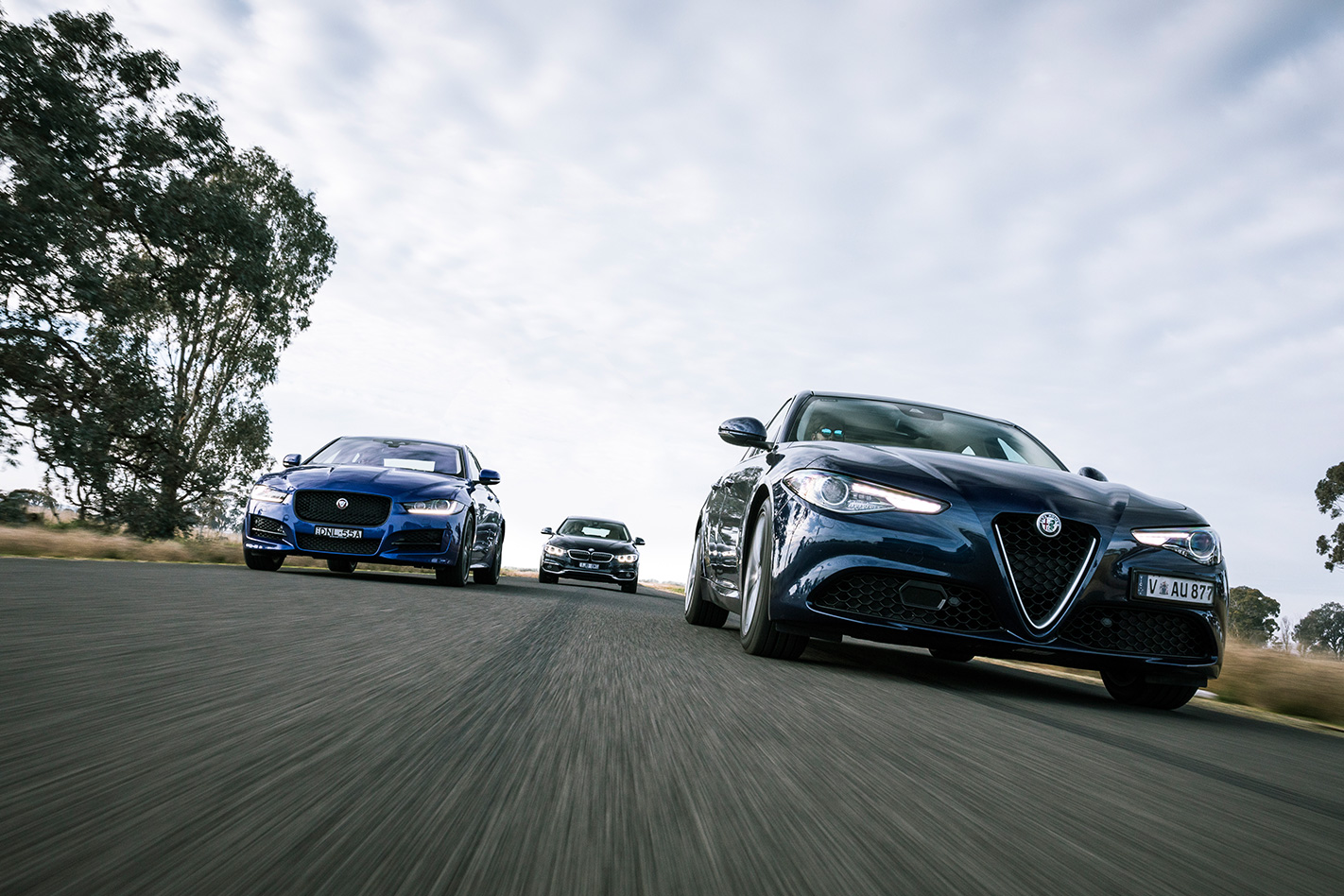
In the final reckoning, despite its overall likeability, the sedan that became a coupe and then became a four-door again asks the most money for the least amount of engine, which proved a hurdle too big to overcome.
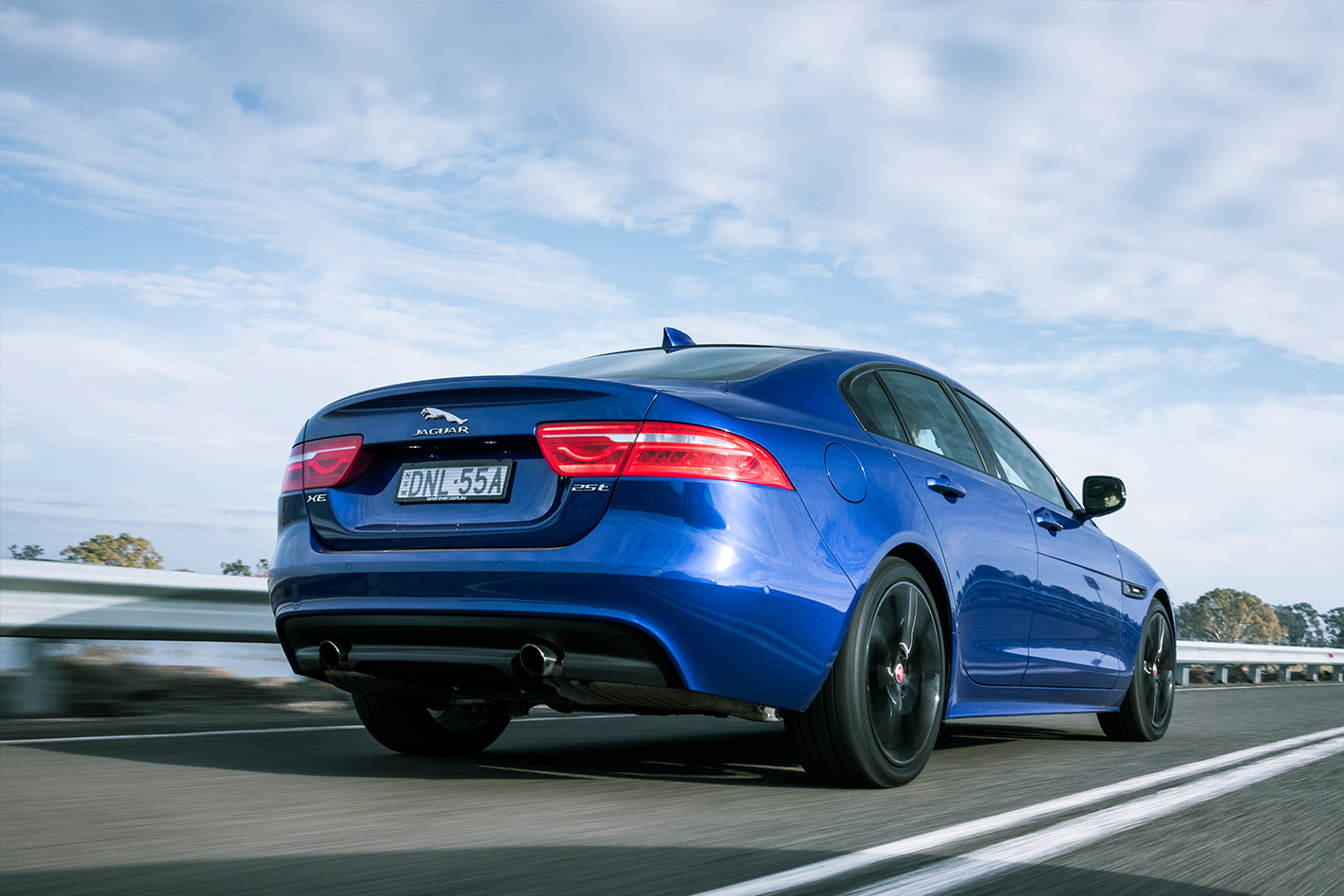
It’s arguably the best-looking car here, it’s the quickest, has unquestionably the best ride (in Normal mode), and is fun to drive. And it’s only going to get better when the Ingenium petrol engines arrive with the promise of better efficiency and refinement.
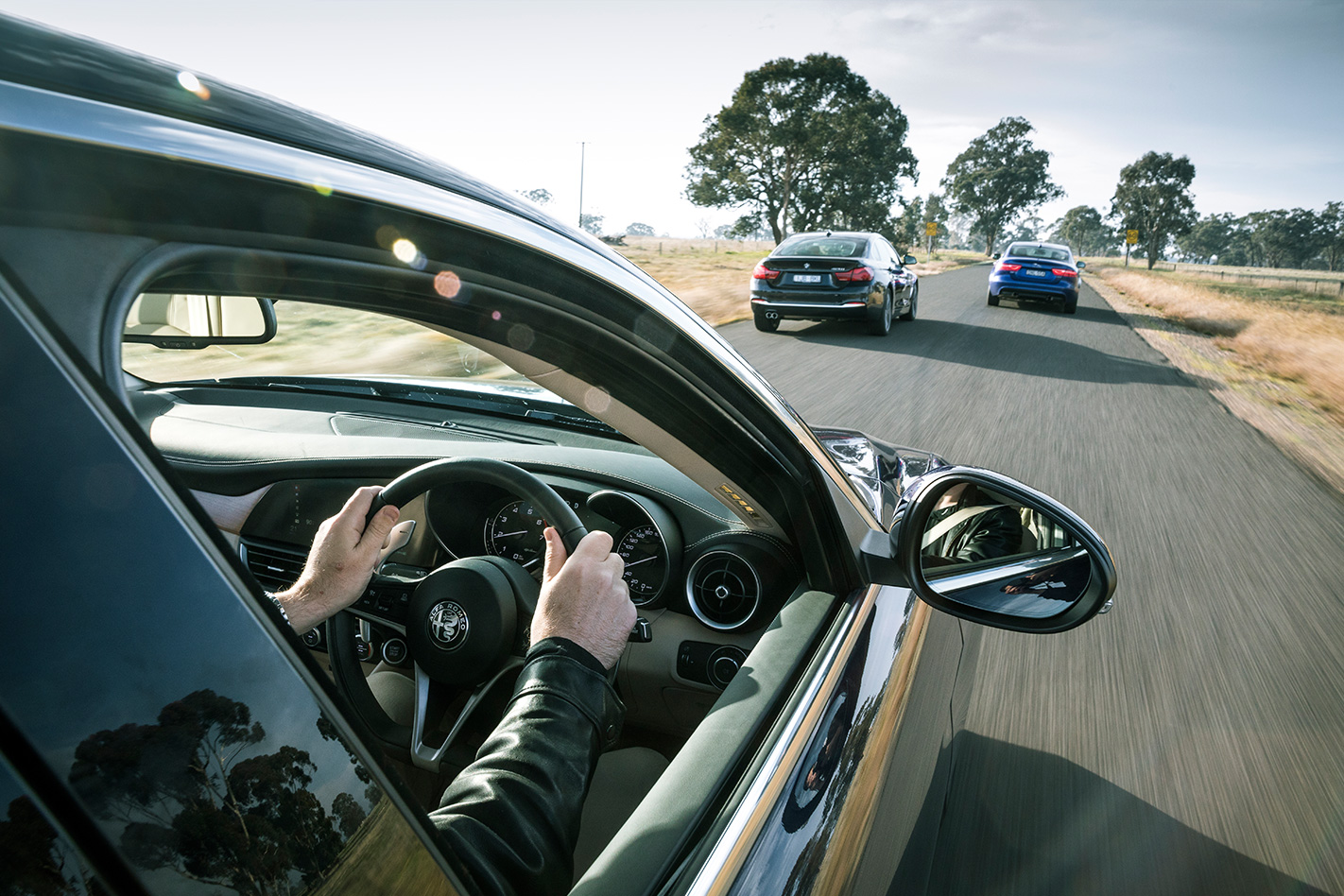
Which leaves the Giulia. Nobody saw this coming, not even those among us who got a bit worked up over the Quadrifoglio. Most felt that with the show-stopping engine taken out of the equation, the Alfa would struggle against the unrelenting polish of the premium German marques, but of all the cars here, there’s only one that’s touched by the mark of genius, and it’s the Giulia. The others are very good cars, and none would spark a moment of buyer’s remorse, but there’s a clear superiority about the way the Giulia goes down a challenging road that buys it all manner of credit.
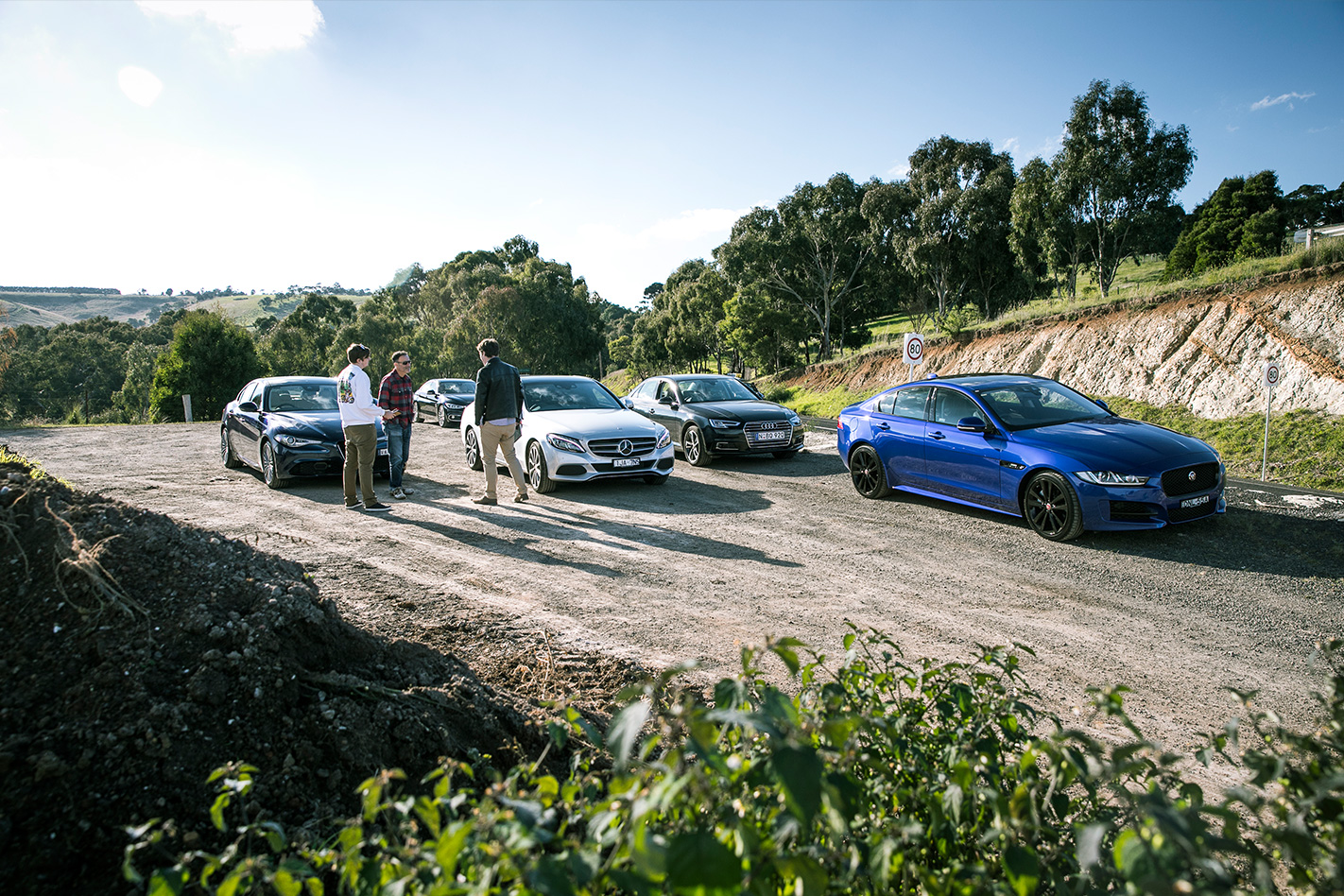
But if, like us, you’d rather be behind the wheel of a car that delivers so much and asks for so little, the Giulia delivers a wholly convincing argument.
Forget what you thought you knew. Press reset. You’re going to like it.
